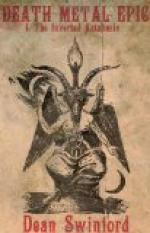Canto XXXIII. The seven Virtues having chanted a hymn, Beatrice motions to Statius and Dante to follow her, asking the latter why he is so mute? Rejoining she best knows what he needs, Dante receives from her lips an explanation of what he has just seen, which he is bidden reveal to mankind. Conversing thus, they reach the second stream, of whose waters Beatrice bids her friend drink, and after that renovating draught Dante realizes he has now been made pure and “apt for mounting to the stars.”
PARADISE
Introduction. The Paradise of Dante consists of nine crystalline spheres of different sizes, the Moon, Mercury, Venus, the Sun, Mars, Jupiter, Saturn, the Fixed Stars, and the Empyrean, enclosed one within the other, and revolved by the Angels, Archangels, Princedoms, Powers, Virtues, Dominations, Thrones, Cherubim, and Seraphim. Beyond these orbs, whose whirling motions cause “the music of the spheres,” lies a tenth circle, the real heaven (a Rose), where “peace divine inhabits,” and of which the Divine Essence or Trinity forms the very core.
Canto I. Paradise opens with Dante’s statement that in heaven he was “witness of things, which to relate again, surpasseth the power of him who comes from thence.” He therefore invokes the help of Apollo to describe that part of the universe upon which is lavished the greatest share of light. Then, while gazing up into Beatrice’s eyes, Dante, freed from earth’s trammels, suddenly feels himself soar upward, and is transferred with indescribable swiftness into a totally different medium.
Canto II. Perceiving his bewilderment, Beatrice reassures him in a motherly strain, and, gazing around him, Dante realizes they have entered the translucent circle of the moon (revolved by angels). After warning his fellow-men “the way I pass ne’er yet was run,” Dante goes on to relate what Beatrice teaches him in regard to the heavenly spheres and spiritual evolution, and how she promises to reveal to him “the truth thou lovest.”
Canto III. In the pearl-hued atmosphere of the moon, Dante beholds, “as through a glass, darkly,” shadowy, nun-like forms, and is told by Beatrice to communicate with them. Addressing the form nearest him, Dante learns she is Piccarda (sister of Forese), who was kidnapped by her husband after she had taken the veil. Although she would fain have kept her religious vows, Piccarda proved a faithful wife, and declares she and her fellow-spirits are content to remain in their appointed sphere until called higher by the Almighty.




